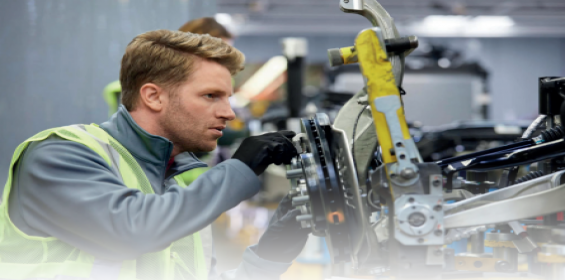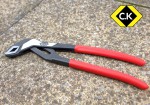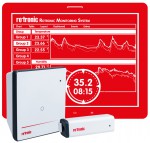Why maintenance systems fail?
Published: 29 November, 2021
Louis Tuttle* takes a look at why maintenance systems fail
Computerised Maintenance Management Software (CMMS) is a relatively mature product category. CMMS has existed for nearly 60 years and while there have been innovations along the way, the core functionality offered is relatively common across all vendors. Products evolve and the agreed and accepted workflows become the norm. Usability issues are addressed with customer feedback while functionality is added to resolve business challenges. In general, CMMS vendors now over-deliver on system functionality. So why do some implementations not live up to expectations while others are career changers, delivering value to their business far exceeding the initial investment?
There are lots of statistics out there to support the view that a large percentage of software projects fail. The numbers range from 50 - 70% and can be higher if there is significant software development required. Because the CMMS space is mature, you should never find yourself customising a chosen solution. Software products, like all products, are built with an end user in mind. Most companies have an ideal customer profile they are trying to address when they build their product. That buyer will have certain problems they are trying to address, and the functionality is built with them at the centre. So, it’s important to establish if you are the correct buyer for that company’s offering. One way to establish this is to find out what other companies are using the offered CMMS or if they are wrestling with similar problems to you?
John Kotter is widely regarded as the world’s foremost authority on leadership and change. According to Kotter, change is achieved through an eight-stage process, and he argues that skipping one step either causes the change project to fail or for it to petter out prematurely. These eight steps distill down to having a ‘sense of urgency’ or a key set of problems that people want to address. In a food company, this could be an audit recommendation from one of their key customers, or in a pharmaceutical company, a regulatory requirement in order to manufacture. Without either, the business might close. It’s then necessary to develop a vision to direct the efforts involved in resolving the problem and then communicating this to those involved or impacted.
Human beings have a strong sense of inertia, a natural resistance to push back on something they don’t understand, fear or don’t want. It’s important to show why staying in the current state isn’t possible or is worse than the future state. This is an incredibly important step. Another related aspect to be on the guard for, is calling the end of the change process too early. It’s important to have mapped out the phases and the associated signs that this phase has been effective. The next step is to consolidate this win and ensure it becomes the accepted work practice. For example, on one site a system upgrade of the CMMS coincided with a new engineering stores building. The new system required engineers to go to a screen to search electronically for the spare rather than walk the aisles to find it. The CMMS told them where the spare was, and if one wasn’t available here, what was available in the satellite store. There was an improvement in spare search time and the only additional thing the engineer had to do was scan the spare on the way out to ensure it was logged. The real benefit was better stock control and improvements in spare carrying facilitated by using the CMMS upgrade as a justification for the work process change.
It isn’t possible to implement a CMMS on your own and it’s definitely not desirable to do so either. Apart from the workload involved, you tend to see adoption issues later when the system is rolled out. A better approach is to create a ‘guiding coalition’ or group of people who have enough power to lead that change. People also tend to trust people who are similar to themselves, so setting up a cross functional team with a representative from each affected department helps to ensure that each end user’s fears are addressed. It also shares the work, shortens the implementation timelines, and prevents adoption issues. Each representative can be used to manage the communication to their department, provide feedback and help remove obstacles.
Anything new is scrutinised but there is also an initial goodwill period. Offering to roll the CMMS out for a period and invite end user feedback helps to address objections while also showing that the end user is an important component in your overall project. Microsoft routinely released their products in the Japanese marketplace because Japanese end users like reporting problems or finding faults, but it also didn’t negatively affect the brand. The same is true in your CMMS project. Identifying key users to field test the system helps create a feedback loop and also a level of interest in the wider user population. If the end users are also key personnel that others watch to take their cue from, then they become even more important. Being selected to field test the new system is seen as a reward or a vote of confidence. It’s a little like Tom Sawyer asking his friends to paint the wall. The work gets done and you gain valuable allies for the system rollout.
Every project needs a win. A quick win helps to establish credibility, ensures senior management support doesn’t waver and might release capital for the next phase. Establishing what improvements are required and focusing initial efforts on those, helps to create some visible gains. That increased credibility can be useful if the next phase is more difficult or if there is a considerable lag in crystalising a win. A good example is looking at paperless maintenance. While paper is a low-tech approach it’s dependable and simple. However, it’s administratively intensive, expensive to store and ever more expensive to retrieve and analyse. Deploying your maintenance system with an App allows you to free up administration time for individual engineers, access equipment history at the machine and also create real time reporting outcomes. You also see dramatic improvements in data quality and quantity recorded. Moving from a 16-step paper process to a 4-step electronic process frees up a lot of time. With the data now going directly into the CMMS, you create the reporting benefits and an analysis capability. There is improved accuracy which affects metrics like Mean Time to Repair (MTTR) and Mean Time Between Failure (MTBF) which can be used to adjust the preventative maintenance intervals for your equipment.
This leads us to one final element. Your CMMS system needs some feedback loop once it’s up and running in order to ensure there is always a drive towards efficiency. The DMAIC (Define, Measure, Analyse, Improve and Control) wheel is a useful way to view your CMMS. One simple example is taking the breakdown information reported on your CMMS to inform your MTBF measure and to then compare this to the preventative maintenance intervals on the related asset. Your CMMS can then identify over- and undermaintained assets based on this metric allowing you to free up resources and save money. Identifying value added and non-value-added activities has become more important and over time it’s possible for your CMMS to have duplicate tasks appearing in weekly, monthly and yearly PMs that are wasted effort. In one example 80% of the tasks inside the CMMS were duplicates or overlapping. Getting your CMMS to warn you that this is happening creates additional wins over time and more credibility for your initiatives.
*Louis Tuttle, PEMAC product director
https://www.linkedin.com/company/pemac/






 C.K. TOOLS, a leading hand tool brand, reports it has launched an enhanced range of one of its most popular products, the C.K Waterpump Pliers. The company says already regarded by tradesmen as one of the most durable plier options on the market, the improved range consists of three sizes: 175mm, 250mm and 300mm and with each size offering extra wide jaw capacities of 38mm, 57mm and 58mm, the new C.K Water Pump Pliers are up to 80% greater than DIN standard to assure the highest quality and durability for electricians.
C.K. TOOLS, a leading hand tool brand, reports it has launched an enhanced range of one of its most popular products, the C.K Waterpump Pliers. The company says already regarded by tradesmen as one of the most durable plier options on the market, the improved range consists of three sizes: 175mm, 250mm and 300mm and with each size offering extra wide jaw capacities of 38mm, 57mm and 58mm, the new C.K Water Pump Pliers are up to 80% greater than DIN standard to assure the highest quality and durability for electricians. ROTRONIC has developed its new Rotronic Monitoring System (RMS). The advanced monitoring system checks, documents and visualises all required measurements in one system. The data can be retrieved from anywhere, at any time by PC, Mac, tablet or smartphone. The system offers high performance, flexibility and versatility and is easy to set up and operate.
ROTRONIC has developed its new Rotronic Monitoring System (RMS). The advanced monitoring system checks, documents and visualises all required measurements in one system. The data can be retrieved from anywhere, at any time by PC, Mac, tablet or smartphone. The system offers high performance, flexibility and versatility and is easy to set up and operate.
